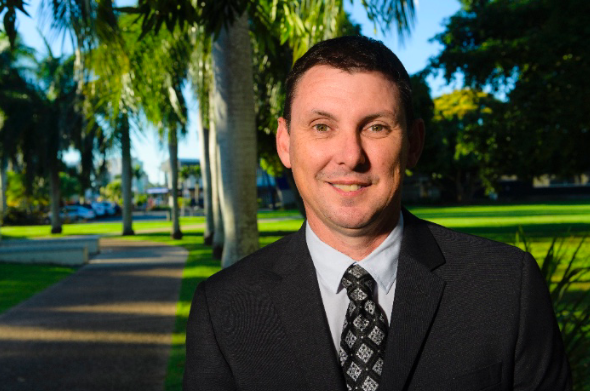After filling various CEO roles over the years working for some of the large private sector companies and Corporations in Australia, Craig Doyle decided to come home to Mackay to take on a CEO role of a different kind when he joined Mackay Regional Council. It is clear that Craig is passionate about improving the liveability of Mackay and ensuring that regional cities are heard and represented in national policy.
Tell us about yourself. Why did you decide to join the council?
I have been at Mackay Regional Council for about 2 and a half years now. I was previously at the Gladstone Ports Corporation, which is the third largest port in Australia and then I was the CEO of Australia’s largest sugar business before that, which is quite unusual for a local government CEO.
Mackay Regional Council is a large organisation, we’re in the top two employers in Mackay, we’ve got 1,100 staff with a $80 million wages bill and I think we’re around the 21stlargest city in Australia, so it was a good opportunity to come home. Mackay has been in a little bit of a bumpy ride with the boom and then a bust. We’re coming out of the bust now, so it was a good opportunity to hopefully do some good for the community.
What are the top three industries in your council’s municipality? How many active businesses are in Mackay?
Mining and resources is very big here, then agriculture – sugar, beef, vegetables – and tourism is the third one. We’ve got 120,000 people in our local government area, we’ve got 52,000 ratepayers, so I think from a total rate point of view, there is over 3000 businesses.
What are your infrastructure priorities for 2018/19?
We’re doing a lot of stimulus activities around liveability, so right now we’re building a new $23 million sports facility for aquatics and athletics. It’ll include a 50 metre pool, a couple of other pools and a large athletics facility, that’ll be a key one for us.
We always work hard on bike paths, foot paths and because obviously we live in north Queensland, so we have a lot of sun and a lot of our people spend a lot of time outside. We will be focussing on our rural roads network as well this year, with 914kms of gravel roads and about 1500kms of sealed roads, then there’s the standard spend on some of our key infrastructure as well, like sewage, treatment plants, drains and water.
What are your plans for the council from an operational perspective in 2018/19?
The delivery of our capital in a timely and efficient manner is a key focus, so much so that we’ve just set up a directorate. I have a fifth directorate reporting directly to me just focussing on the delivery of capital we spend, which is around about $120,000 to $130,000 million a year across a diverse range of projects. We want to deliver our capital more efficiently, and we are focusing on that by setting up a structure to do that.
Management of assets is always a high priority for us. We have a lot of assets here as most councils do. We have a book value between $3 and $4 billion of all our assets, so it’s a key focus of ours.
How does the council contribute to Mackay overall in terms of its functionality and ability to grow?
In the 2017/18 financial year we injected around $180M in spend plus wages on top of that into the local community.
For our capital projects we have a local buy policy, so we try to encourage local companies to participate in our tenders. Obviously there is a criteria and process to follow but we try to promote that. As a large employer, we obviously generate and stimulate jobs and then we are heavily involved in our economic development body, Greater Whitsunday Alliance, with our neighbours in the Whitsunday and Isaac regional councils.
Could you tell our readers a little more about the tourism increase in Mackay?
The amount of visitors to Mackay has seen significant growth in the last 12 to 18 months, with our growth in the double digits and that’s partly because of improved business conditions.
We are seeing a lot more international tourists visit Mackay. We’ve just opened our new $3.4 million tourism information centre to catch more of the drive market. We’re trying to make Mackay more RV friendly and increase that visitation. I think a lot of people are now coming here to come and see what we’ve got to offer – we’ve got natural rainforests, great facilities and we’re even seeing people come and see us on their way to other areas or even on the way back down from the Whitsundays.
Why do you think regional capital cities deserve a place in national policy
We all know most people live in the big cities, but if you talk about our area alone, we contribute something like $15 billion to the national GDP from our local government area alone. The royalties that come from coal and that come from this region, we don’t see much of those royalties because obviously the state spreads it across far and wide, which we understand.
When you look at where the wealth comes from for Australia, it typically comes from regional areas for resources, agriculture, all those different things, they’re not in the city. We’ve got to understand where all of the wealth, the growth, the sustainability comes from and that’s in the regional Australia, so we should have a say in policy, we should not be left out of any key discussions that influence key initiatives for the nation or the state.
